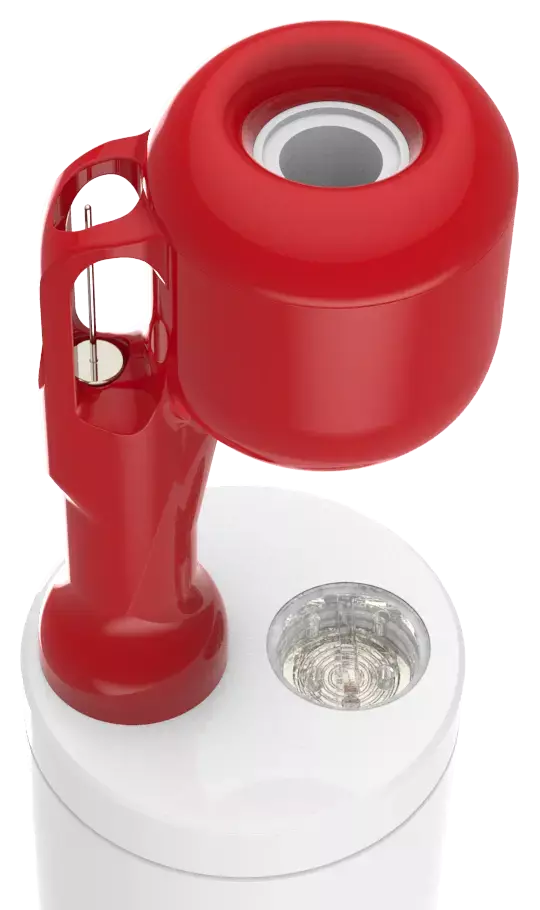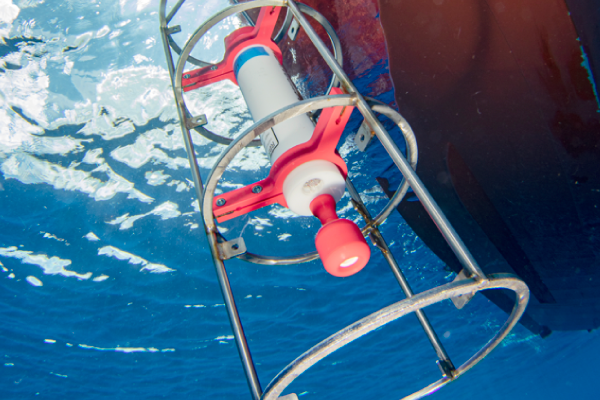There are many tools to measure the physical properties of the ocean, yet few are as universal as the CTD. RBR’s inductive conductivity cell has taken its place at the forefront of high-accuracy CTD sensor technology as a proven standard that is robust, reliable, and uses a fraction of the power required for pumped CTDs.
Conductivity, temperature, and pressure (depth) form the basic toolkit of oceanographic measurements. Many common CTDs feature an electrode-based conductivity cell, which requires a pump mechanism to actively circulate water past the sensors. This generally translates to overall higher power consumption, as well as noise and vibrations from the moving mechanical parts. In 2000, RBR introduced its inductive conductivity cell technology, which offers an alternative standard: designed to function without a pump, the inductive conductivity cell is naturally flushed by the surrounding water, providing reliable, high-performance CTD measurements with very low power consumption. This has proven to be crucial to the next generation of ocean gliders and Argo floats that are expected to sample for longer periods and carry more sensors. Since its introduction, thousands of CTDs with inductive conductivity cells have been built at RBR and deployed by major oceanographic centres worldwide.
How (and why) the inductive conductivity cell works
As hinted in the name, the inductive conductivity cell operates according to Faraday’s law of induction. An AC signal, applied to a toroidal coil inside the cell, induces a current in the seawater at the cell’s centre. This current loops through the seawater to, in turn, induce a current in a second internal toroidal coil. The received current in the second coil is proportional to the water’s resistance which is inversely proportional to its conductivity.
 Short and wide, the cell’s low-aspect-ratio shape allows water to flow naturally through the cylindrical opening at its centre. The unpumped design boasts a power consumption that is 90 percent lower than a common pumped CTD, with the same high accuracy. This allows for extended measurement opportunities, for example faster sampling and longer deployments, and can significantly improve a deployment’s results. This is particularly important for platforms with limited power, such as ocean gliders and Argo floats.
Short and wide, the cell’s low-aspect-ratio shape allows water to flow naturally through the cylindrical opening at its centre. The unpumped design boasts a power consumption that is 90 percent lower than a common pumped CTD, with the same high accuracy. This allows for extended measurement opportunities, for example faster sampling and longer deployments, and can significantly improve a deployment’s results. This is particularly important for platforms with limited power, such as ocean gliders and Argo floats.
For improved derivations of salinity and density, a co-located temperature sensor ensures that conductivity and temperature measurements are made on the same local water parcel. The combined CT cell design is therefore particularly well-suited for regions with high gradients. RBR offers three versions of the inductive conductivity cell, rated for 750dbar, 2000dbar, and 6000dbar maximum pressures.
In the absence of a pump, the inductive conductivity cell has no moving parts. The cell’s silent operation benefits sensitive acoustic measurements, and the elimination of pump vibrations can improve measurements of turbulence, when these measurements are taken close to the CTD. As opposed to electrode-based cells, which require contact between the sensing electrodes and the water and are therefore highly susceptible to even microscopic amounts of fouling, the inductive conductivity cell is unaffected by trace amounts of contaminants such as surfactants and oils. RBR CTDs are therefore well-suited to measurements in near-surface waters, nominally within 20cm of the air-sea interface.
Calibration and measurement accuracy
RBR conductivity measurements are calibrated to an accuracy of ±0.003mS/cm with a resolution of 0.001mS/cm. When combined with temperature measurements accurate to ±2mK, an RBR CTD will provide a salinity measurement accurate to within ±0.003PSU. The accuracy specifications for conductivity and temperature are valid over the range of 0 to 85mS/cm and -5 to 35oC, respectively.
Objects close to the conductivity sensor may affect the cell’s calibration and measurement accuracy by the proximity effect, but its practical implications are limited and often preventable. Permanent objects in the near field of the conductivity cell, such as sensor guards, antenna, or other instrument sensors, can be accommodated by calibrating the instrument with the objects present, thereby negating their effects. For instruments attached to a mooring line, RBR provides mounting clamps to offset the CTD. In addition, laboratory experiments show that only objects within 15cm of the conductivity cell noticeably affect measurement accuracy. However, even within this distance, changes to the calibration due to common objects, such as a steel mooring line, fall within the cell’s accuracy specification of ±0.003mS/cm. The proximity effect caused by objects further than 15cm from the cell is negligible.
Proven success
RBR strives to provide a seamless user and product experience for each and every one of its instruments. Because of its small size and robust construction, RBR CTDs are easy to transport, clean, and maintain. They are versatile and can be integrated into most platforms. Currently, RBR CTDs can be found on ocean gliders, profiling Argo floats, underway profilers, and autonomous underwater and surface vehicles. They are also commonly deployed from kayaks, aircraft, research vessels, and commercial fishing boats.
With over 45 years of experience in designing and manufacturing precise instrumentation, RBR is committed to driving product innovation that puts our users’ needs first. RBR CTDs have been deployed into every world ocean, from the tropics to the poles and from the surface to the abyss, and have frozen and thawed in the harshest environments. The inductive conductivity cell has proven its ruggedness and reliability, retaining its calibration accuracy in extreme measurement conditions and withstanding shock and impact forces thanks to its robust construction. The technology has demonstrated stability, accuracy, and resolution over time. With this proven performance and reliability, RBR’s inductive conductivity cell has taken its place as an industry standard of high-accuracy CTD technology.
We look forward to working with you to achieve your measurement goals.
________________________________________________
This article was previously published in the Oceanology International 2022 show guide.
